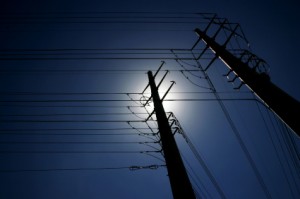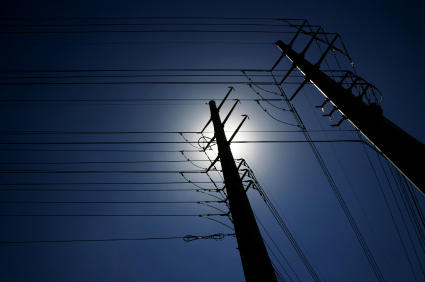The U.S. power grid, as it exists today, is dying a slow and miserable death. Experts in the private and public sectors are also concerned about the weakness of the grid [2] and suggest we are one major catastrophic event away from a complete meltdown in America.
Click here for the complete guide to prepare you for any disaster [3]
Historical Cases
The largest blackout that occurred in U.S. history was on August 14, 2003, leaving over 50 million people without power in the Northeast, Midwest and parts of Canada. The blackout’s primary cause was a software bug in the alarm system at a control room of the FirstEnergy [4] Corporation in Ohio. Operators were unaware of the need to re-distribute power after overloaded transmission lines hit unpruned foliage. What would have been a manageable local blackout cascaded into widespread distress on the electric grid.
In 2012, the San Diego Gas & Electric Company shut down, affecting power in Southern California and Arizona. The blackout affected 1.4 million homes and 5 to 6 million people. Flights out of San Diego International Airport were suspended. There were people trapped in elevators, cell phones and land lines went dead making it impossible to call for help. Moreover, gas stations were shut down.
And most recently, for the first time in twenty years, due an extreme heat wave California began rolling blackouts. The broiling conditions that began Friday [5] may rival the deadly seven-day heat event of July 2006, [6] the National Weather Service said.
This outdated and aging infrastructure has been in need of a major update for decades; however, instead of investing in a new, more efficient power grid that utilizes renewable power sources (such as solar and wind), regulators instead chose to patch it up to make it work for the time being. This “duct-taped” approach is no match for the constant power stream needed to keep population-dense areas functioning or for the extreme weather we have experienced over the last decade.
Our grid is long overdue for investment and upgrades. Begun in the early 1900’s when the power system consisted of large, isolated power plants, our current grid is ill-equipped to serve smaller, innovative solar or wind facilities. The majority of the existing system was built more than 30 years ago and has only received incremental investment since. Today, 70 percent of the lines and large power transformers are more than 25 years old, and we don’t have enough of them in areas of the country with the best new energy resources. (Source [7])
There is No Official U.S. Power Grid
To begin, our grid is really three interconnected grids: the eastern, western, and Texas interconnection, that are each independently owned and operated by different power plants and transmission lines. This privatization can only lead to further issues down the line. In this article, the author writes, “Similarly, while many countries have privatized the distribution sector and introduced some competition between retailers, retail tariffs and other matters such as safety, reliability, and customer service have remained under regulatory oversight specific to the electricity industry. (Source [8])
 How Rolling Blackouts Affect Us
How Rolling Blackouts Affect Us
A “rolling blackout” typically occurs due to a weather-related event. However, there are other issues at play that can cause these blackouts to occur. Faulty software and manmade disasters (i.e., cyber-attacks, EMPs [9]) can also cause the grid to go down for a given period of time, as seen in 2003’s grid debacle. This puts stress on the other electrical grids who then compensate for the loss of energy to that existing grid. When these events take place, there is an overwhelming increase of power in homes and commerce to either generate heat, air conditioning, or electricity. When this need overwhelms the grid, the utility company intentionally “shuts off the power to an area in order to reduce the load on an electricity generation and grid. The utility company turns it back on, and then shuts the power off in a different area, with outages in any given area typically lasting 60 to 90 minutes, according to the California Energy Commission. This is the last resort measure of utility companies to avoid an even worse situation — a total power blackout.
Rolling blackouts go beyond sitting in the dark at home waiting for the power to come back on. They affect our commerce, our transportation systems, and our overall infrastructure. Electric equipment such as automated teller machines (ATMs), credit card processing units, and elevators may not work during the power outage. Traffic signals will be down thus causing traffic delays. More notably, they can be life-threatening [10] and cause medical issues, especially with the elderly [11].
What About Renewable Energy?
Although renewable energy such as solar and wind play a part in adding to the grid, the U.S. grid is so old and outdated it can’t handle the influx of wind power and other intermittent renewable resources.
There is an even more pressing problem, according to this article [12] in the New York Times: the grid isn’t big enough. The wind tends to blow strongest in places, such as North and South Dakota, that are far from where people live and use electricity. And no one wants to spend the millions of dollars it would take to put in a new transmission line (not to mention the legal headache of getting all those rights of way). (Source [13])
Prepare for the Problem
As long as the power grid remains in its current state, we must open our eyes to the reality that rolling blackouts will continue to be a regular part of dealing with disasters. Like all disaster preparedness, there are ways to insulate yourself and prepare your homes and family for the reality of this inconvenient truth.
- Follow energy conservation measures to keep the use of electricity as low as possible, which can help power companies avoid imposing rolling blackouts.
- Prepare to endure extreme weather situations.
- Look into alternative power sources [14] to supply your home with power.
- Have ways to prepare food [15] off the grid.
- Keep your car tank at least half full because gas stations rely on electricity to power their pumps.
- Be aware that most medication that requires refrigeration can be kept in a closed refrigerator for several hours without a problem. If unsure, check with your physician or pharmacist.
- Know where the manual release lever of your electric garage door opener is located and how to operate it. Garage doors can be heavy, so know that you may need help to lift it.
- Keep a key to your house with you if you regularly use the garage as the primary means of entering your home, in case the garage door will not open.
- Have money on hand in case stores are not processing credit cards.
- Drink plenty of fluids in hot weather.
In the Home
- Learn out to protect your food supply [16] when the power is out. To be proactive, begin using perishable foods in the freezer and refrigerator to minimize food spoilage. Also, to keep items as cool as possible during rolling black, limit the number of times the refrigerator or freezer door is opened. If you are concerned that the meat may spoil, preserve it beforehand, by either the canning method or the dehydration method.
- Freeze soda bottles filled with water and when the rolling blackouts occur, place the frozen soda bottles in the refrigerator to maintain the optimum temperature.
- Stay indoors and try and keep your body temperature as normal as possible.
- Close window blinds and curtains to keep the heat out.
- Keep refrigerator and freezer doors closed to keep your food as fresh as possible.
- Turn off or disconnect appliances, equipment (like air conditioners), or electronics in use when the power went out. Power may return with momentary “surges” or “spikes” that can damage computers as well as motors in appliances like the air conditioner, refrigerator, washer, or furnace.
- Do not connect a generator to a home’s electrical system. If you use a generator, connect the equipment you want to run directly to the outlets on the generator. Do not run a generator inside a home or garage.
- Leave on one light so that you’ll know when your power returns.
- Use the phone for emergencies only. Listen to a portable radio for the latest information.
- Have a generator with stored gas to power appliances.
- Take steps to remain cool if it is hot [17] outside. Click here for tips on how to stay cool during rolling blackouts [18]. If the power is off for long periods of time, consider getting out of the house. Go to a movie theater, shopping mall or “cooling shelter” that may be open in your community. If you remain at home, move to the lowest level of your home, since cool air falls. Wear lightweight, light-colored clothing.
- Drink plenty of water, even if you do not feel thirsty.
- Put on layers [19] of warm clothing if it is cold outside. Never burn charcoal for heating or cooking indoors. Never use your oven as a source of heat. If the power may be out for a prolonged period, plan to go to another location (the home of a relative or friend, or a public facility) that has heat to keep warm.
- Provide plenty of fresh, cool water for your pets.
- Eliminate unnecessary travel, especially by car. Traffic signals will stop working during an outage, creating traffic congestion.
The grid’s aging infrastructure, combined with a rise in domestic electricity consumption and extreme weather issues has forced experts to critically examine the status and health of the nation’s electrical systems. Rolling blackouts will no longer be a phenomenon, but a regular occurrence. Thus taking us into third world country living conditions. Welcome to the new America.

